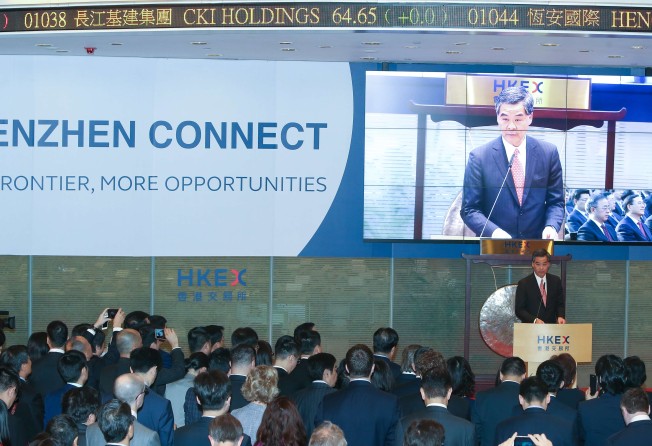
Stock Connect recovery paves way for more A-share inclusion in global indices
Global index providers expected to launch ‘mini’ indices to reflect China A-shares, amid easier access and a recovering stock market

Leading stock index providers continue to reject including A-shares in their main global benchmarks. But they are expected to increasingly launch mini indices to track the Chinese stocks to meet demand amid easier access and a recovering onshore stock market, according to Michael Orzano, director of global equity indices product management at S&P Dow Jones Indices.
China’s capital controls, most notably the 20 per cent monthly repatriation limit on the qualified foreign institutional investor (QFII) funds remains a concern to global stock investors because they pose liquidity risks in meeting redemptions, Orzano said.
QFII is the programme that permits certain licensed international investors to participate in China’s mainland stock exchanges.

They face similar risks given the fact that about 5 per cent of companies remain suspended in China’s stock market after official restrictions were put in place due to the summer market crash of 2015.
S&P’s Dow Jones, the MSCI and FTSE stock indexes have instead launched a series of mini or “alternative” China A-shares indices in recent years, as China gradually opens up the onshore markets to different types of investors and gradually unwinds stock market restrictions.
These are designed mainly for large institutional clients that have the means to navigate China’s complex system of obtaining renminbi qualified foreign institutional investorand (RQFII) and QFII quotas to access the onshore market.
S&P’s DJI also designed indices for investors who want to limit their index components to China’s stock connect programmes – its Access HK Low Volatility High Dividend Index for southbound activity saw a 27.68 per cent return this year, beating its Access China A, for northbound flow, that saw a mere 0.86 per cent return.
“Interest is growing from our US and European clients on top of Hong Kong clients. I expect more China A-share indices to be launched,” according to Orzano.
Hong Kong-listed companies have generally outperformed China A-shares over the past year, driving the outperformance of the indices based on the Southbound Connect, Orzano said.
“But overtime, increased accessibility should lead to greater participation from global investors, which should be supportive of growth and stability of the A-share market.”
Overtime, increased accessibility should lead to greater participation from global investors, which should be supportive of growth and stability of the A-share market
After a poor debut the Shezhen-Hong Kong Stock Connect programme is recovering.
It’s northbound flow climbed 79.1 per cent from the prior month to 60.0 billion yuan in March after a 32.5 per cent increase in February and 3.4 per cent drop in January, according to the latest data.
At the same time, Shanghai-Hong Kong Stock Connect northbound trade also saw a 44.6 per cent jump in March after a 10.6 per cent increase in February and 26.9 per cent decrease in January.
China launched the Shenzhen-Hong Kong Stock Connect last December, allowing international investors to trade 881 Shenzhen-listed stocks in northbound trade.
This further opens up mainland equity markets, following the introduction of the Shanghai-Hong Kong Stock Connect in 2014 that allows foreigners to buy 600 Shanghai-listed stocks.
For southbound activity, mainlanders in Shenzhen are allowed to trade 417 Hong Kong-listed stocks while investors in Shanghai can buy 318 Hong Kong stocks.